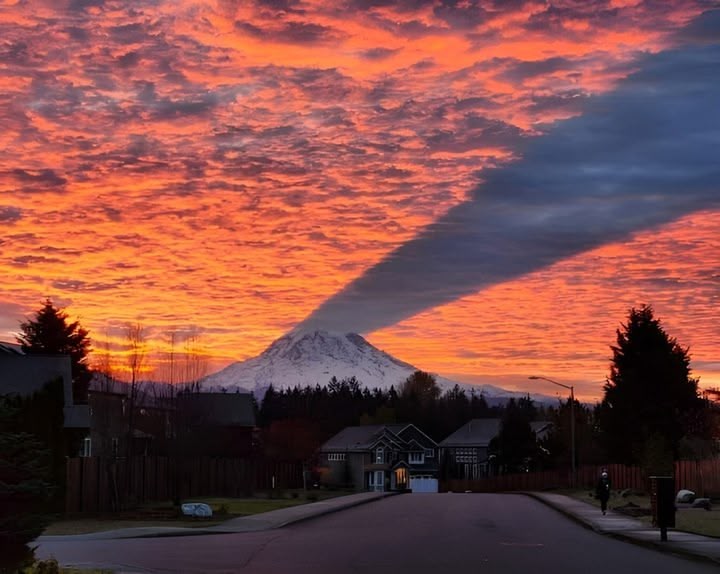Mount Rainier Casting A Long Shadow
Picture captured by Lisa Bishop, from the South Hill area of Puyallup, WA (don't try to pronounce it, even auto-spell tells me it's spelled incorrectly).
It is the highest volcano in the Cascade Volcanic Arc, standing at 14,410 feet.
The phenomenon occurs when the sun rises behind the mountain, causing its shadow to project onto the cloud deck, creating a dramatic visual effect. The event is rare and happens mid-October to January when the sun's position aligns perfectly with Rainier's peak, AND it's a clear day (which makes it even really rare, given our weather).
I see the mountain every day from my neighborhood, and by that, I mean the days when it's not cloudy and raining.
It is the highest volcano in the Cascade Volcanic Arc, standing at 14,410 feet.
The phenomenon occurs when the sun rises behind the mountain, causing its shadow to project onto the cloud deck, creating a dramatic visual effect. The event is rare and happens mid-October to January when the sun's position aligns perfectly with Rainier's peak, AND it's a clear day (which makes it even really rare, given our weather).
I see the mountain every day from my neighborhood, and by that, I mean the days when it's not cloudy and raining.










